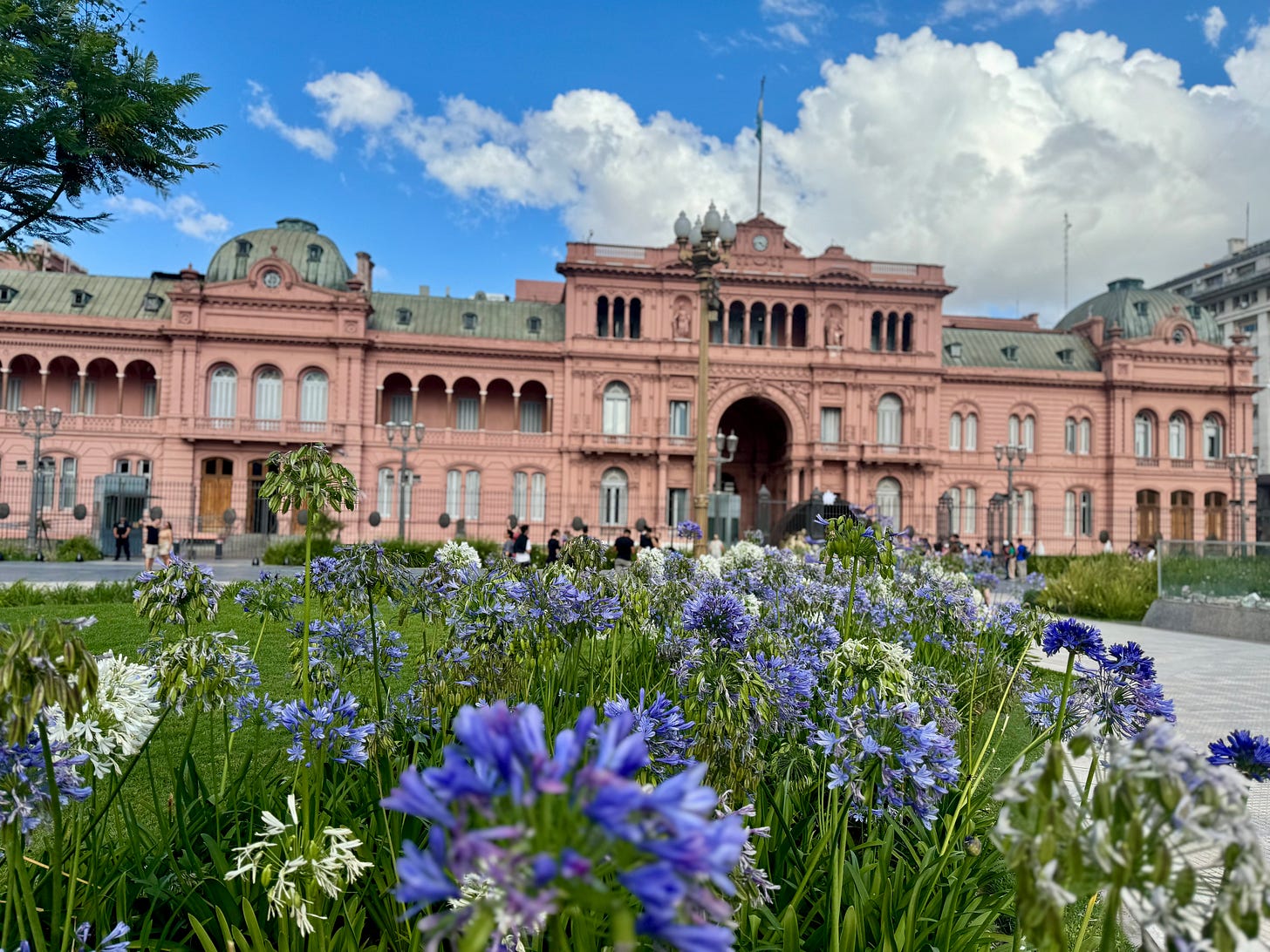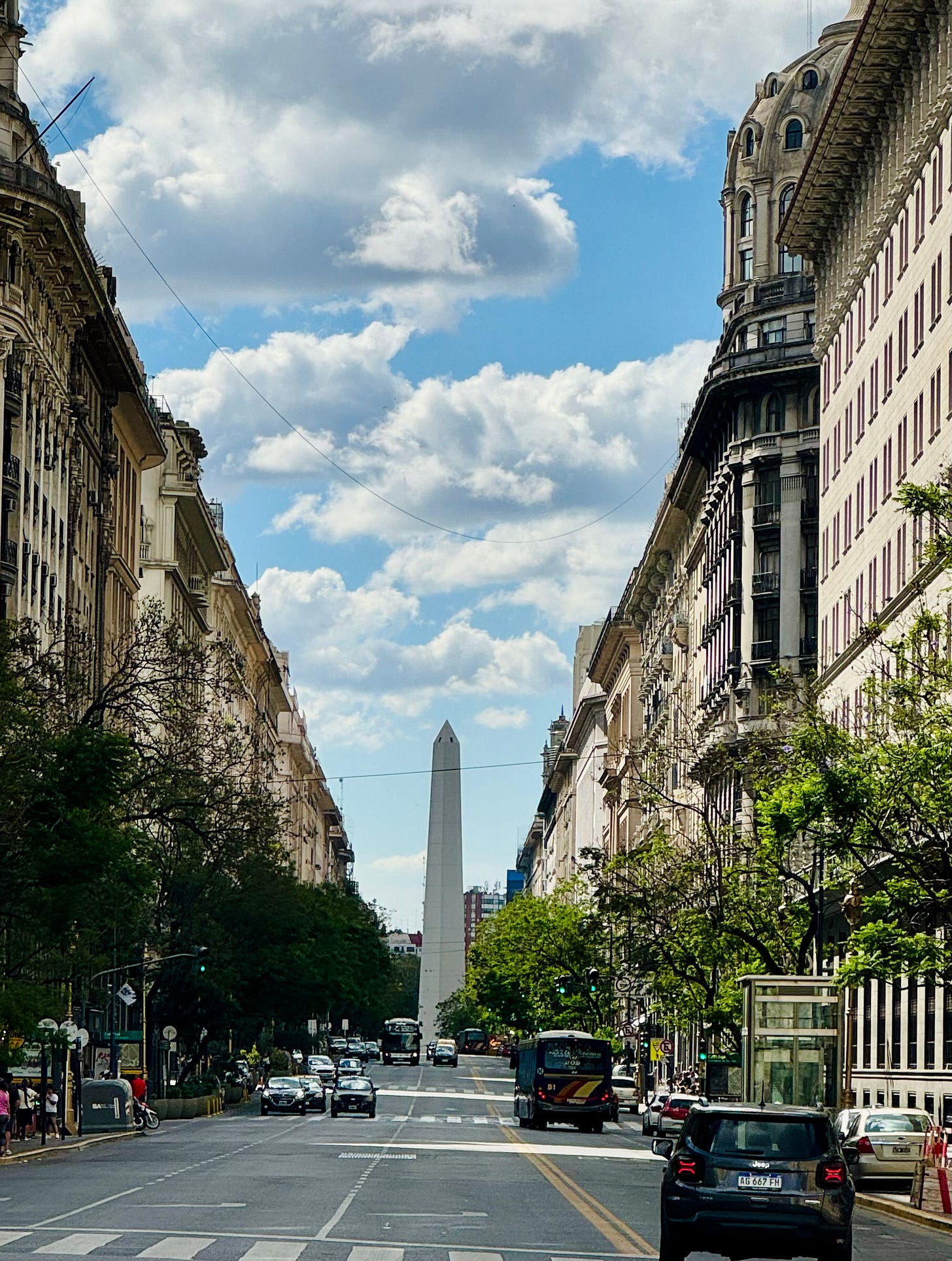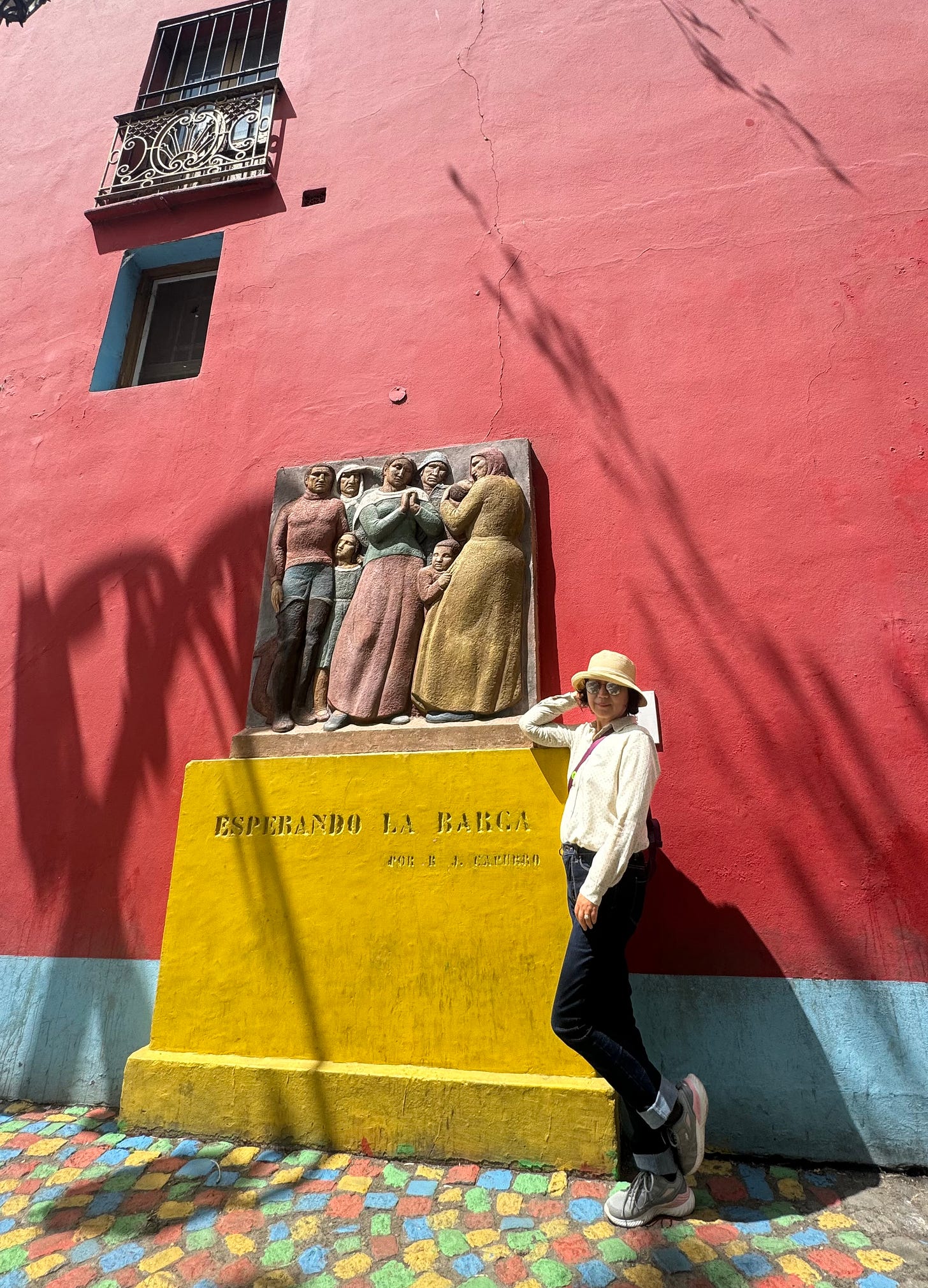Whispers of Argentina: the Last Chapter of a Grand Voyage
South America Cruise Diary (December 14-15, 2025)
The Grand Finale of Our 31-Day South America Cruise
Buenos Aires, December 14-15, 2024
Buenos Aires was the final destination of our 31-day South America cruise. Lady Oosterdam arrived at the port around 8 a.m. on December 14 and would stay overnight, giving us two full days to explore the vibrant capital of Argentina.
As with most South American ports, pedestrian traffic was not allowed inside the port area, so complimentary shuttle buses were arranged to take passengers from the ship to the port entrance. The shuttles ran continuously every half hour throughout our stay.
Buenos Aires is Argentina’s largest and most cosmopolitan city, known for its well-preserved European architecture and rich cultural life. Since the 19th century, Argentina has welcomed millions of immigrants from all over the world, making Buenos Aires a melting pot of ethnicities and traditions. Often referred to as the "Paris of South America," the city’s grand boulevards, ornate buildings, sprawling green spaces, and strong European influences, particularly French and Spanish, make the nickname feel well deserved.
There is so much to see and do in Buenos Aires that two days felt far too short. Sadly, we didn’t have time to visit the world-renowned Iguazú Falls, which would require more than 15 hours of travel each way. Even within the city itself, the distances between key attractions were too long to cover on foot. So, we opted for a hop-on-hop-off city tour bus to get an overview and prioritize what we wanted to explore further. The full loop lasted three hours and cost $35 per person.
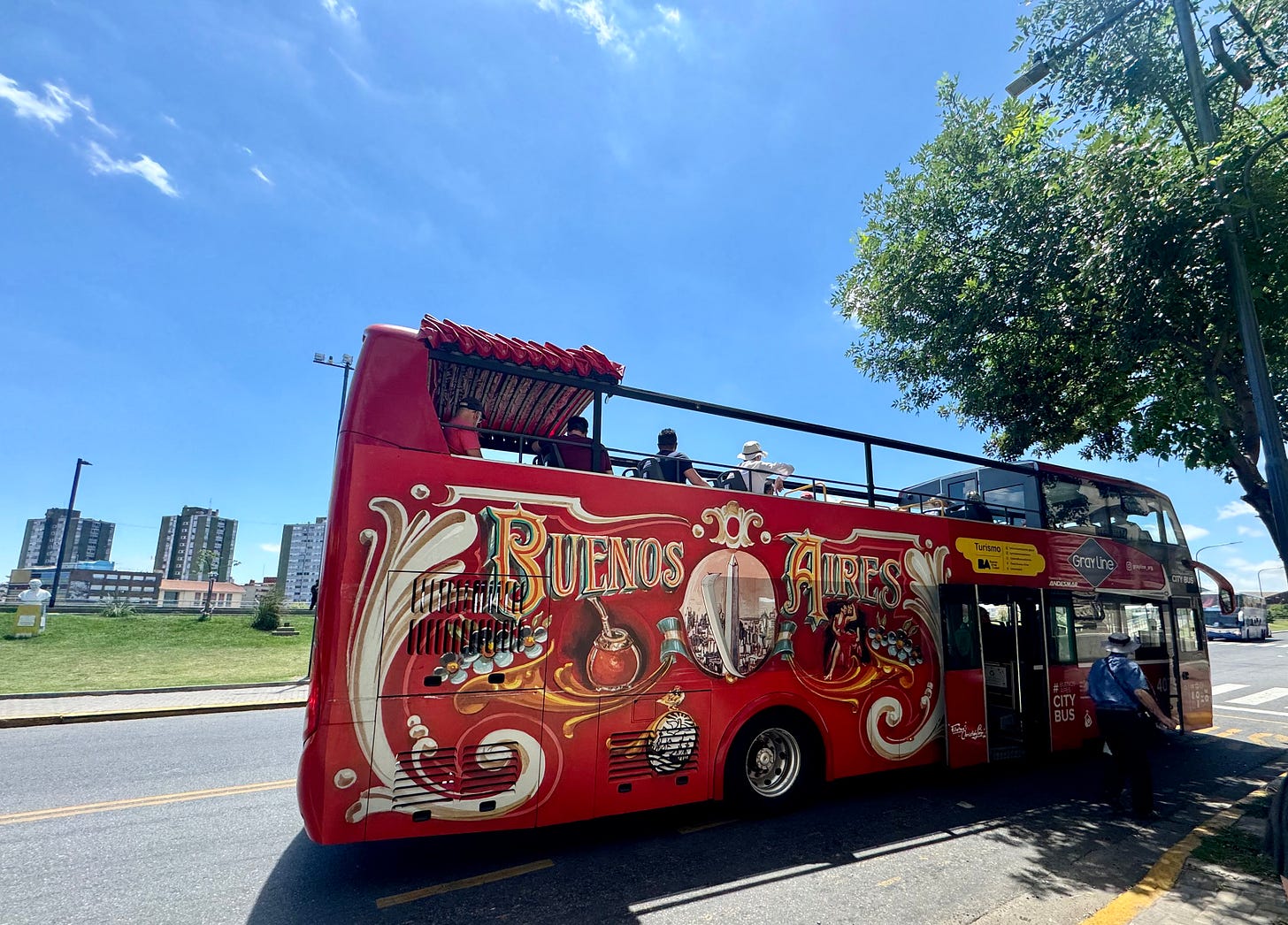
Riding on the top deck with English-narrated earphones, I enjoyed watching historic landmarks, iconic statues, ornate European-style buildings, and sleek modern skyscrapers go by. I was especially impressed by how much of the city was covered in greenery—tree-lined avenues, parks, and gardens.
Suddenly, a splash of colour caught my eye. We didn’t know where we were, but we decided to hop off the bus to explore. We had arrived in La Boca, the city’s most outrageously colourful neighbourhood.
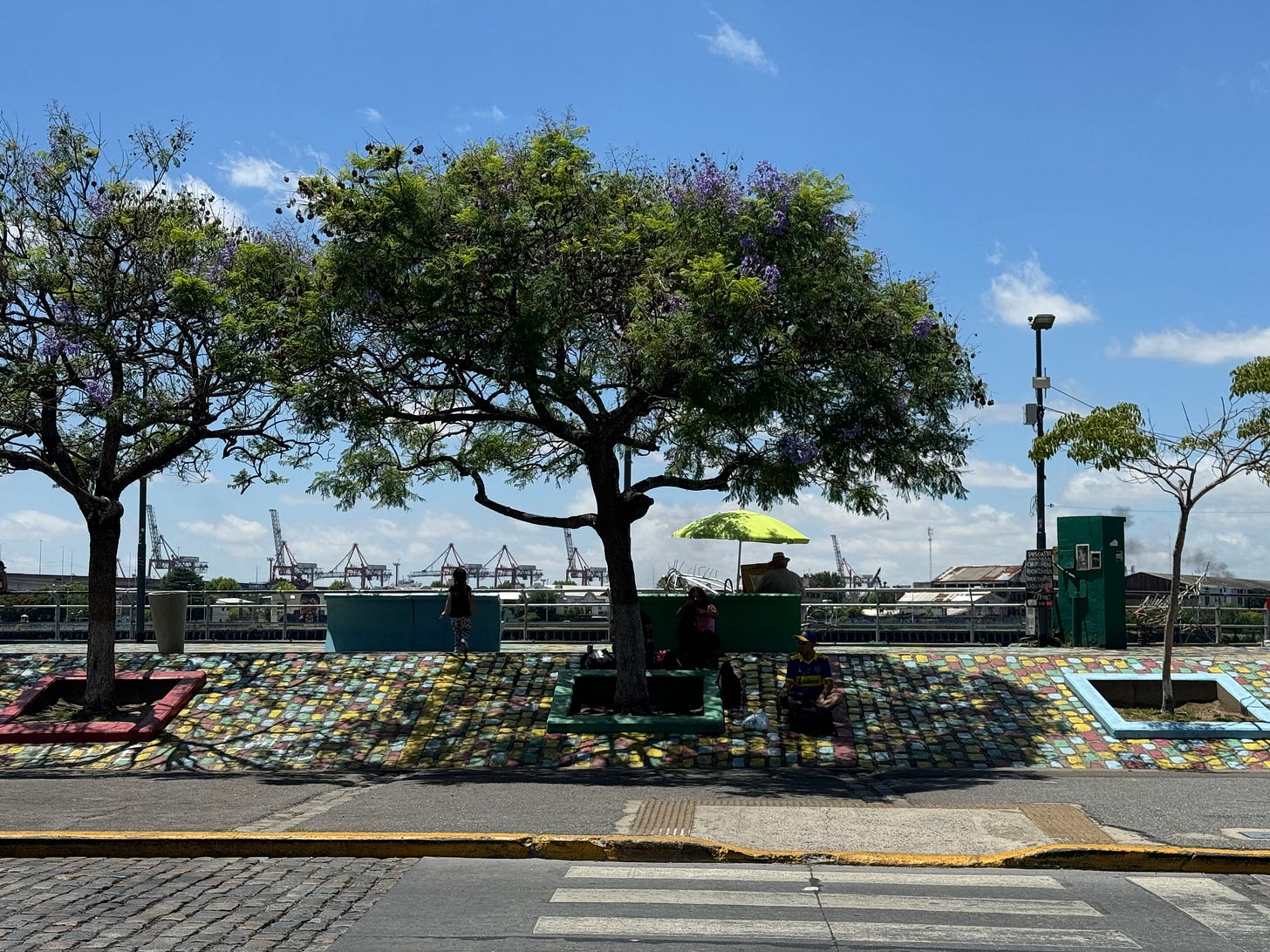
La Boca has deep working-class roots. Located near the port, it became home to many Italian, Spanish, and Central European immigrants in the late 19th and early 20th centuries. The neighborhood’s houses, many made of leftover ship materials, were painted in bright colours, a tradition started by artists in the 1960s. La Boca, especially its heart, El Caminito, is now a vibrant tourist attraction, buzzing with colour, music, and energy. Bright murals, rooftop decorations, and street performers, especially tango dancers, added a joyful flair to every corner. It was a visual feast!
I had learned from our cruise director that Tango, that elegant and passionate dance, originated in this very region—between Argentina and Uruguay—in the 1880s. It began in brothels and bars of port areas, performed to entertain sailors and travellers. Today, no visit to Argentina would be complete without experiencing a live tango performance.
Just as essential as tango is Asado, the Argentine-style barbecue. Though it may have been wiser to find a restaurant outside the tourist zone, we were hungry and couldn’t resist the delicious aroma coming from nearby grills. We sat down and ordered an asado platter—an enormous variety of grilled meats, including blood sausages, piled high on a platter that could have easily fed four to six people. My husband and I probably consumed more meat in that one meal than we usually do in a week! As we ate, a pair of tango dancers and a Latin vocalist performed right in front of our table—what a memorable experience.
One thing we learned the hard way: paying with a credit card adds a service fee, and tipping (5–10%) is expected in Argentina. Cash is usually the better option.
The downside of the hop-on-hop-off bus was the long wait between stops, about 30 minutes, so we switched to using Uber instead.
One of our stops was Plaza de Mayo, the historical and political heart of Buenos Aires. The square, founded in 1580, is surrounded by key landmarks, including:
Casa Rosada (The Pink House): The official residence of the President. As I gazed at the central balcony, the song "Don’t Cry for Me, Argentina" echoed in my mind. I imagined Eva Perón, beloved by the people, giving her final speech from that very spot.
Metropolitan Cathedral: This grand cathedral holds the remains of General José de San Martín, known as the "Father of the Nation," along with a tomb honouring unknown soldiers of Argentine independence. An eternal flame burns at the cathedral’s façade.
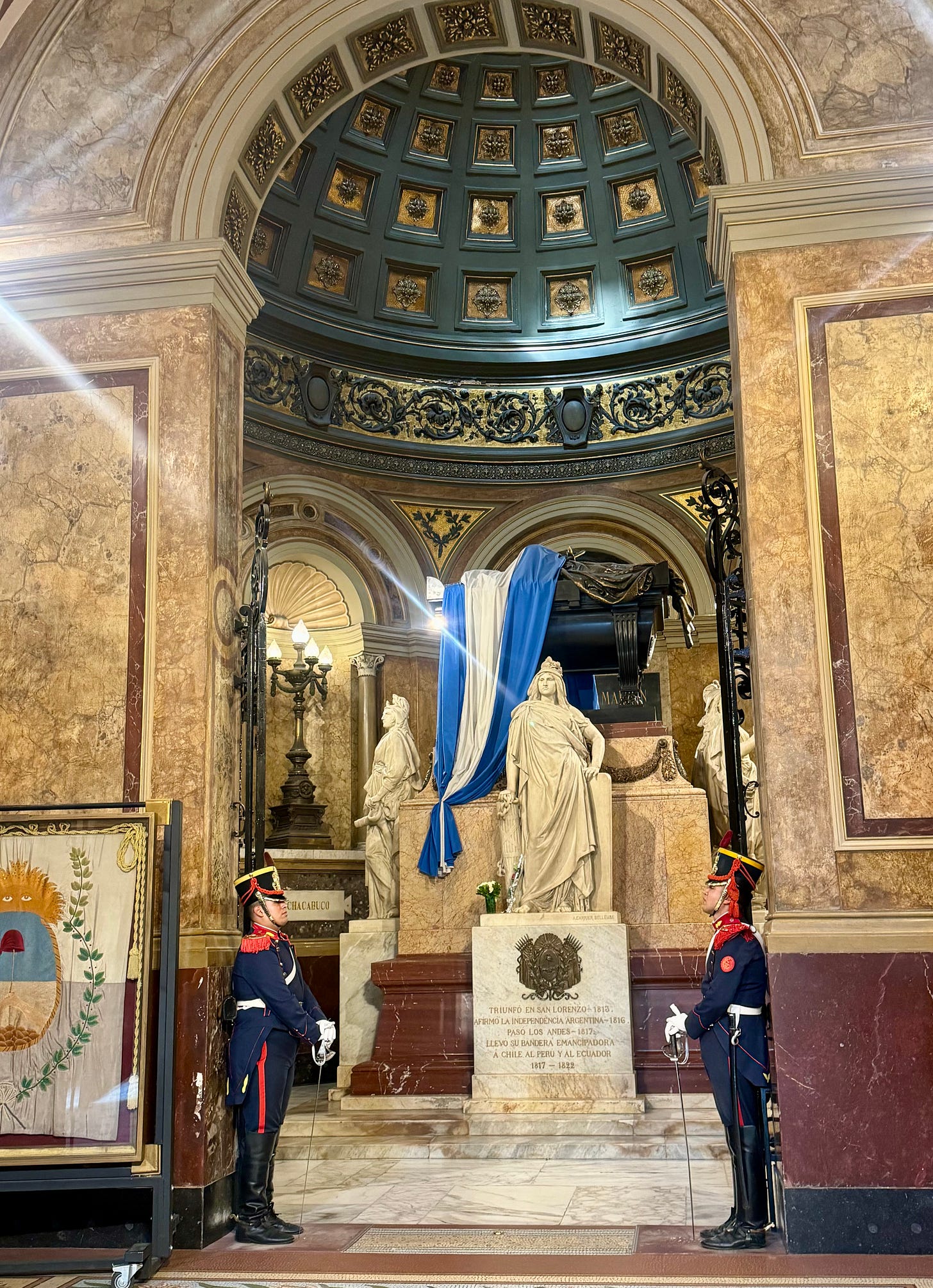
The Obelisk: An unmistakable symbol of Buenos Aires, comparable in cultural significance to the Eiffel Tower in Paris or the Statue of Liberty in New York. It marks the location where the national flag was first raised in the city.

Argentina’s love for football is evident everywhere. Proud fans wore white and blue jerseys, still commemorating their recent World Cup victory in 2022, and football fields dotted the urban landscape.
As the day wound down, we witnessed a military troupe from the Regimiento de Granaderos a Caballo General San Martín solemnly march across the plaza toward the Pink House. Their presence added to the sense of national pride and security.
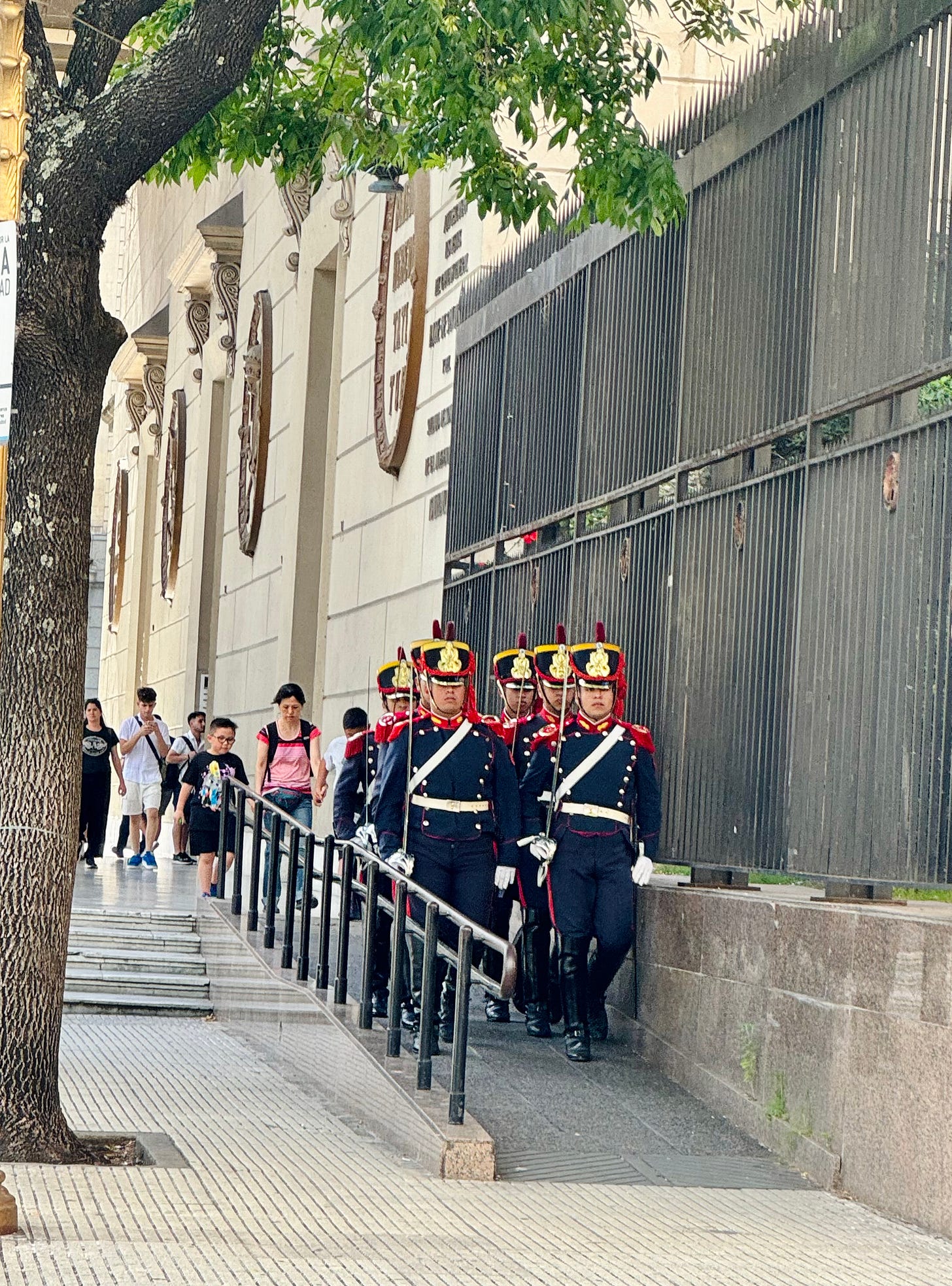
Just as we were calling an Uber to return to the ship, something unexpected happened. A splash of yellow liquid hit me. I looked up, there was no signs of rain or water from above, but I smelled mustard. A man quickly approached us with a stack of tissue paper, trying to help wipe off the yellow stains. That’s when we realized we had fallen victim to a mustard scam, a distraction used by petty thieves. Luckily, nothing was taken, and we got into the Uber as quickly as possible. The driver gave us a sympathetic look as we filled his car with the strong smell of mustard. Back on the ship, we looked like walking impressionist paintings, streaked in yellow!
December 15 – Farewell to South America
This was the final day of our unforgettable cruise. After 31 days at sea, immersed in nature’s beauty, enjoying delicious food and entertainment, bonding with new friends and being pampered by the ship’s dedicated crew, it was time to return to our normal lives until the next voyage.
Our flight wasn’t until 5 p.m., so we joined a half-day tour offered by Holland America, which included sightseeing and airport transfer. It was a perfect arrangement, as our luggage traveled with us.
The tour bus passed familiar landmarks we had seen the previous day and stopped at three new places:
Recoleta Cemetery – One of the world’s most famous cemeteries, where generations of Argentina’s elite rest in peace. Each family tomb was like a small architectural masterpiece. The grave of Eva Perón is here, still adorned with flowers and tributes. As I walked through the serene paths, I found myself pondering mortality—where we go after death. I shook off the melancholy, not wanting to end the trip with sadness.
Art Market – A lively space where local artisans displayed paintings, handmade goods and souvenirs.
San Telmo – A charming neighbourhood known for its colonial buildings, antique shops, and tango-filled streets.
Finally, we were transported safely to Buenos Aires Ezeiza International Airport. As I looked around one last time, I whispered to myself:
“Goodbye, Argentina.”



